A Spring Flower Walk at Nutten Hook
By Claudia and Conrad
Last weekend, we guided a couple of walks around the loop trail at Nutten Hook to celebrate the reawakening of the plant life. Here are some images of the trail, the surrounding landscape, and some of the plant life we found along the way.
Rue Anemone (Thalictrum thalictroides) was the most common spring flower along the trail.

But before we dive into the details, here is the trail from parking area towards the ice house ruins. The signage by the ruins shows images of a large, three-story facility at this site which was used to store the ice cut in winter on the Hudson and later shipped to NYC. The (then abandoned) buildings burnt down in the 1930s and a young forest of Cottonwood, American Elm, and Black Locust grew up within the perimeter of the old foundation.

The view north along the shore of the Hudson River from near the ice house.

We took the trail south past the ice house ruins and up onto the high shore. The evergreen trees are Northern White Cedar (Thuja occidentalis, which grow wild only along the shores of the Hudson in our county) and Red Cedar (Juniperus virginiana).
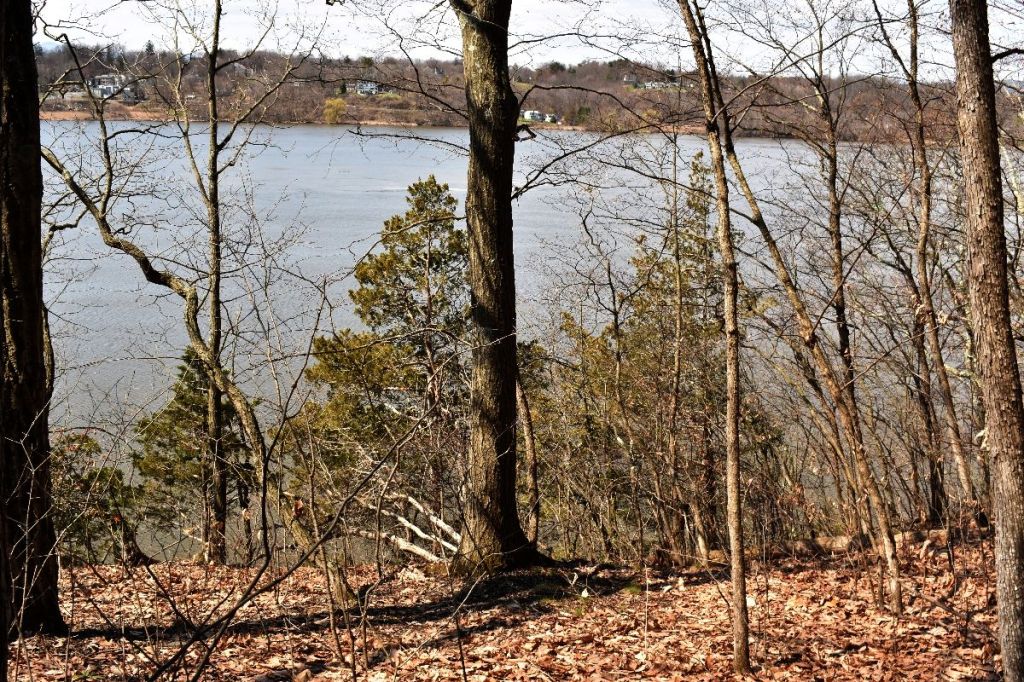
Several of the Red Cedar trees had gelatinous orange layers attached to their branches. These were reminiscent in color and texture (but not in shape!) to Cedar-Apple Rust (Gymnosporangium juniper-virginianae), and turned out to be a related fungus, the Cedar-Quince Rust (G. clavipes).

An unusual sight are the flower clusters of Fragrant Sumac (Rhus aromatica), which greeted us along the trail. Although it is a relative of Poison Ivy, this rare native shrub does not cause any rash.

The inconspicuous Fragrant Sumac (Rhus aromatica) camouflaged against the leaf litter.
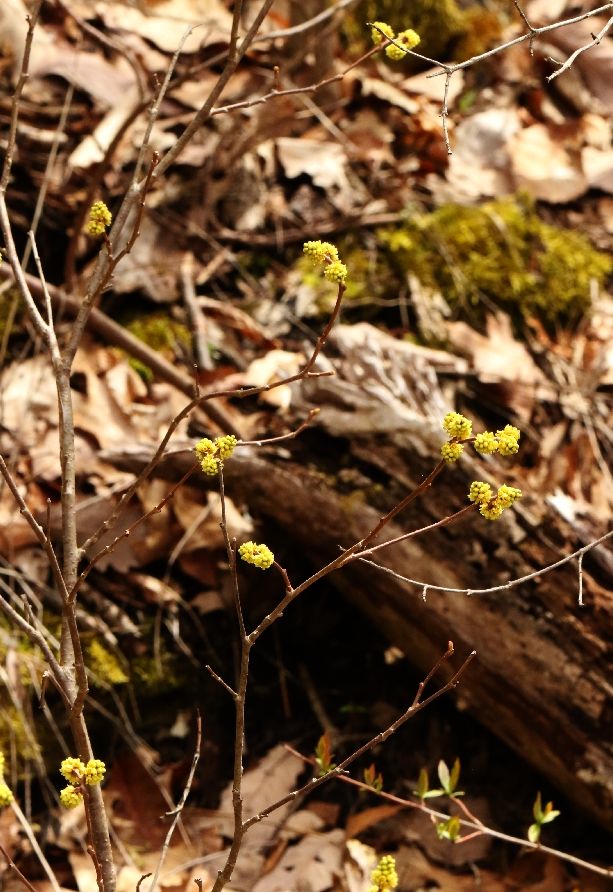
A cluster of Rue Anemone (Thalictrum thalictroides). Note the roundish leaves reminiscent of the mediterranean Garden Rue.

A closer look at the flower of Rue Anemone (Thalictrum thalictroides) reveals several stigmas (pollen-catching flower parts) at the center, surrounded by innumerable stamens (pollen-bearing flower parts), advertised by six (sometimes five or seven) white “tepals” (the indistinguishable petals/sepals). Rue Anemone offers pollen, but no nectar to flower-visiting insects.

Another common wildflower along the trail with rue-shaped leaflets is Early Meadow-rue (Thalictrum dioica). As the name “dioica” implies, Early Meadow-rue has pollen-bearing and fruit-bearing flowers on different plants.

The pollen-bearing flowers of male Early Meadow-rue (Thalictrum dioica) are composed of clusters of dangling stamens.

The seed-bearing flowers of female Early Meadow-rue (Thalictrum dioica) look like little white stars, composed mostly of the white stigmas.

Blunt-lobed Hepatica (Anemone americana) flowers were shyly emerging from the leaf litter. Interestingly, Blunt-lobed Hepatica, Rue Anemone, and Early Meadow-rue all belong to the same family as buttercups.
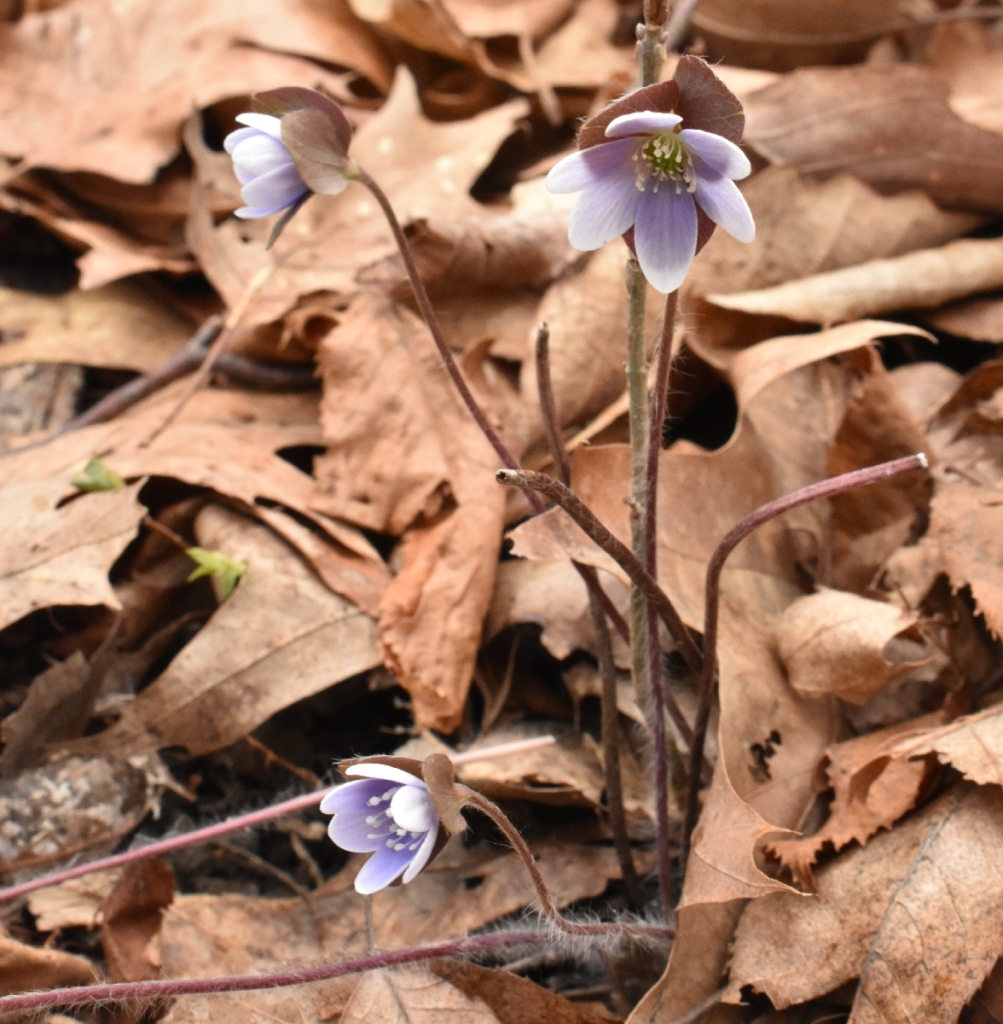
A grass-like plant drew our attention: the winter-green rosettes of Broad-leaved Sedge (Carex platyphylla). Note how last year’s leaves are now slowly dying off, while out of the center of the clump emerge flowers and new leaves.

The male, pollen-bearing (above) and female, seed-bearing (right) flower spikes of Broad-leaved Sedge (Carex platyphylla). The female flowers are composed of a green sack (“perigynium”) which surrounds the future seed, and a three-parted stigma which sticks out of the sack and tries to catch pollen.
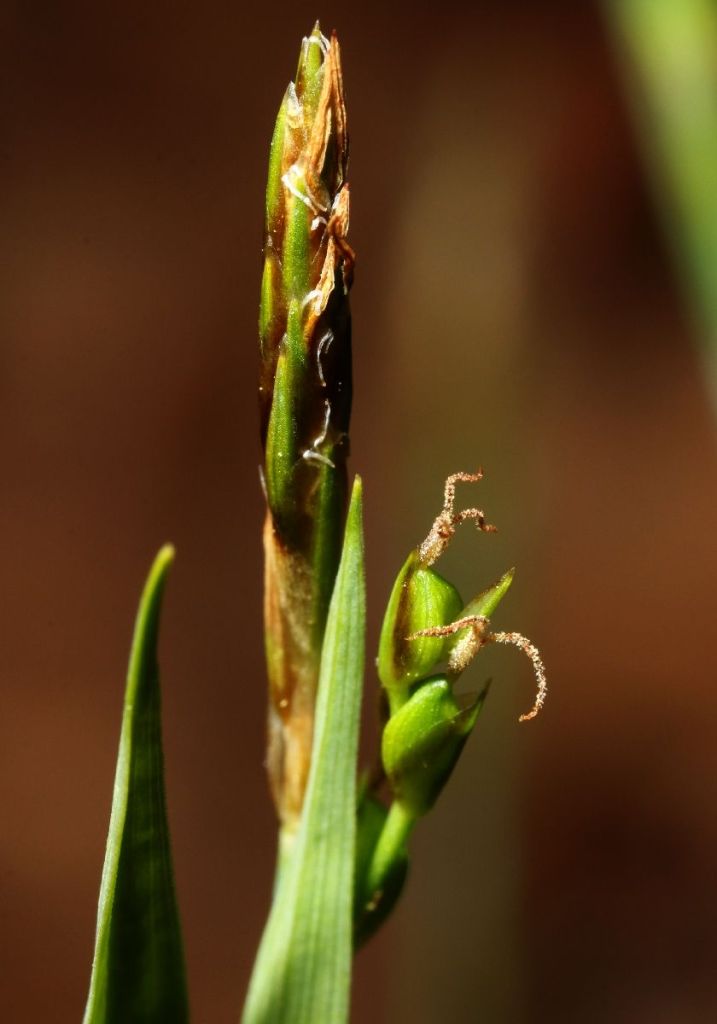
Towards the south end of the trail, there are several rock outcrops and here we found Early Saxifrage (Micranthes virginiensis) whose name translates to “stone breaker”.

Early Saxifrage (Micranthes virginiensis) has clusters of five-petalled white flowers and is a magnet for pollinators.

In the same neighborhood, we also found Smooth Rock Cress (Boechera laevigata), a native member of the mustard family.

A closeup reveals the dangling, four-petalled flowers of Smooth Rock Cress (Boechera laevigata).

The rock outcrops also harbor another, less conspicuous native mustard, the delicate Lyre-leaved Rock Cress (Arabidopsis lyrata).

The Lyre-leaved Rock Cress (Arabidopsis lyrata) has the typical four-petalled flower shape of a mustard.

Another inconspicuous plant of shallow soils and rock outcrops is the native Pussytoes (Antennaria sp.).
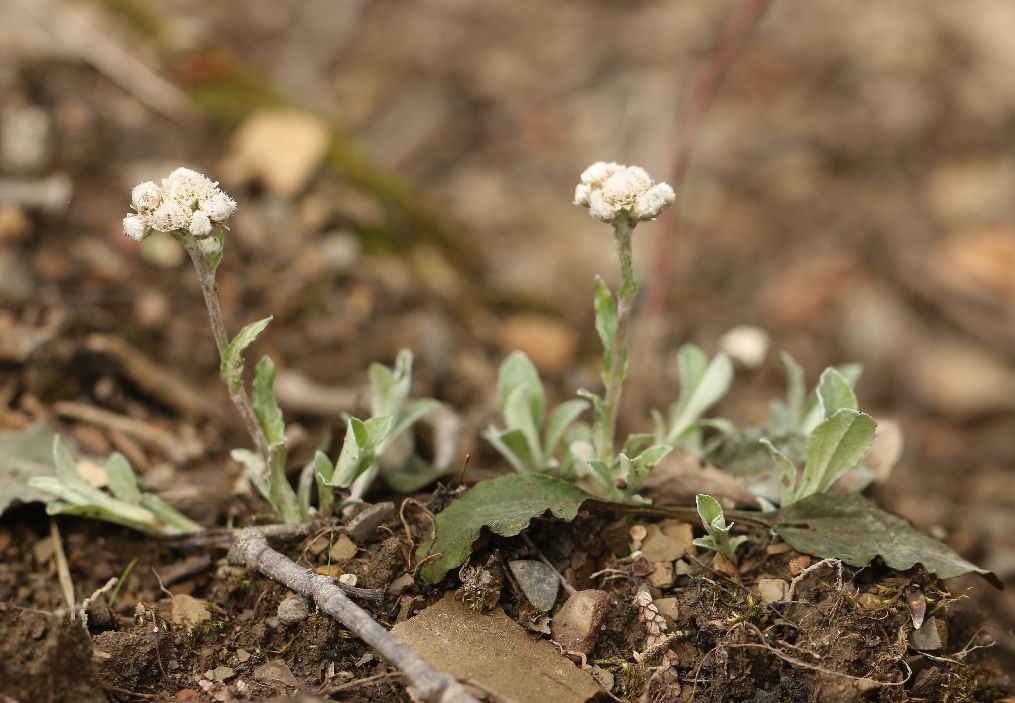
Officially, a member of the aster family, the fuzzy little flower-heads who give Pussytoes their name, are not at all reminiscent of their more showy relatives, such as asters and goldenrods.

Where the trail turns east and descends steeply towards the tidal marsh, we noticed some patches of Kidney-leaved Buttercup (Ranunculus abortivus).

The often over-looked native Kidney-leaved Buttercup (Ranunculus abortivus) is a forest-loving relative of the well-known Common Buttercup of pastures and hayfields. Note the variation in leaf shape: kidney-shaped basal leaves contrast with narrow stem leaves.

The flower of Kidney-leaved Buttercup (Ranunculus abortivus) has five tiny petals and a ring of stamens, which surround a central cluster of multiple carpels, each of which will develop into a one-seeded fruit.

These narrow-leaved, grass-like clumps belong to Pennsylvania Sedge (Carex pensylvanica), a common sedge that can form a lawn-like groundcover in dry, open forests.

The delicate male flower spike of Pennsylvania Sedge (Carex pensylvanica). The anthers at the tip are still fresh and filled with pollen, while the anthers to the right are releasing their pollen or are already empty and drying up.
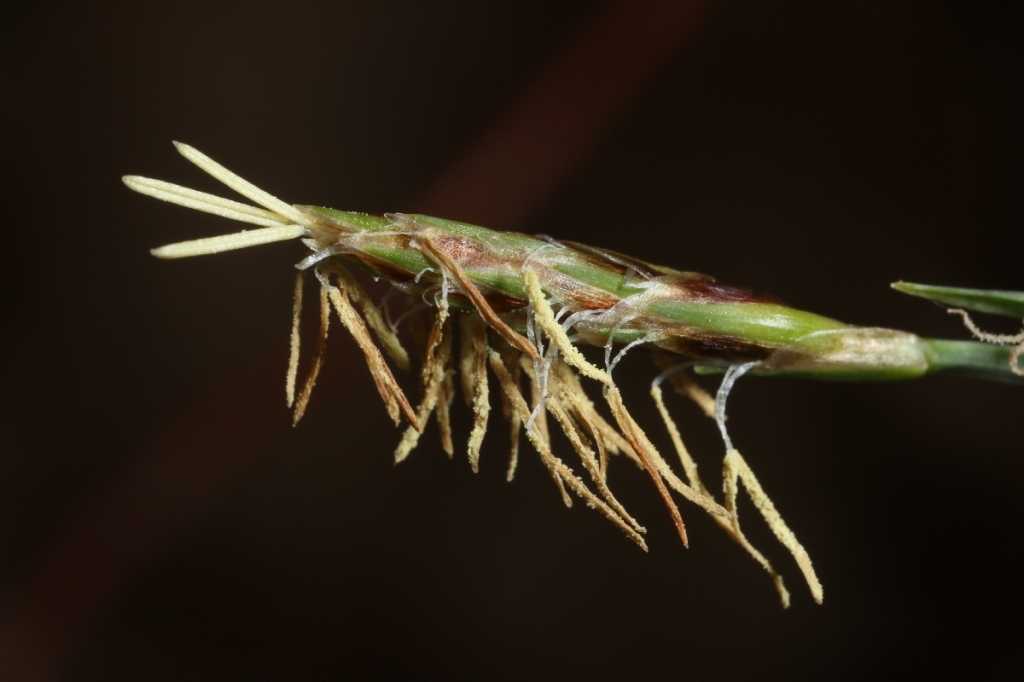
Down near the tidal marsh, we encountered some beautiful Skunk Cabbage (Symplocarpus foetidus) plants. This one really deserves to be called a “cabbage”…

The flowers of Skunk Cabbage (Symplocarpus foetidus) are tiny and attached to a central column (“spadix”) hidden inside a fleshy, hood-like structure (“spathe”), just like the flowers of the closely-related Jack-in-the-Pulpit.
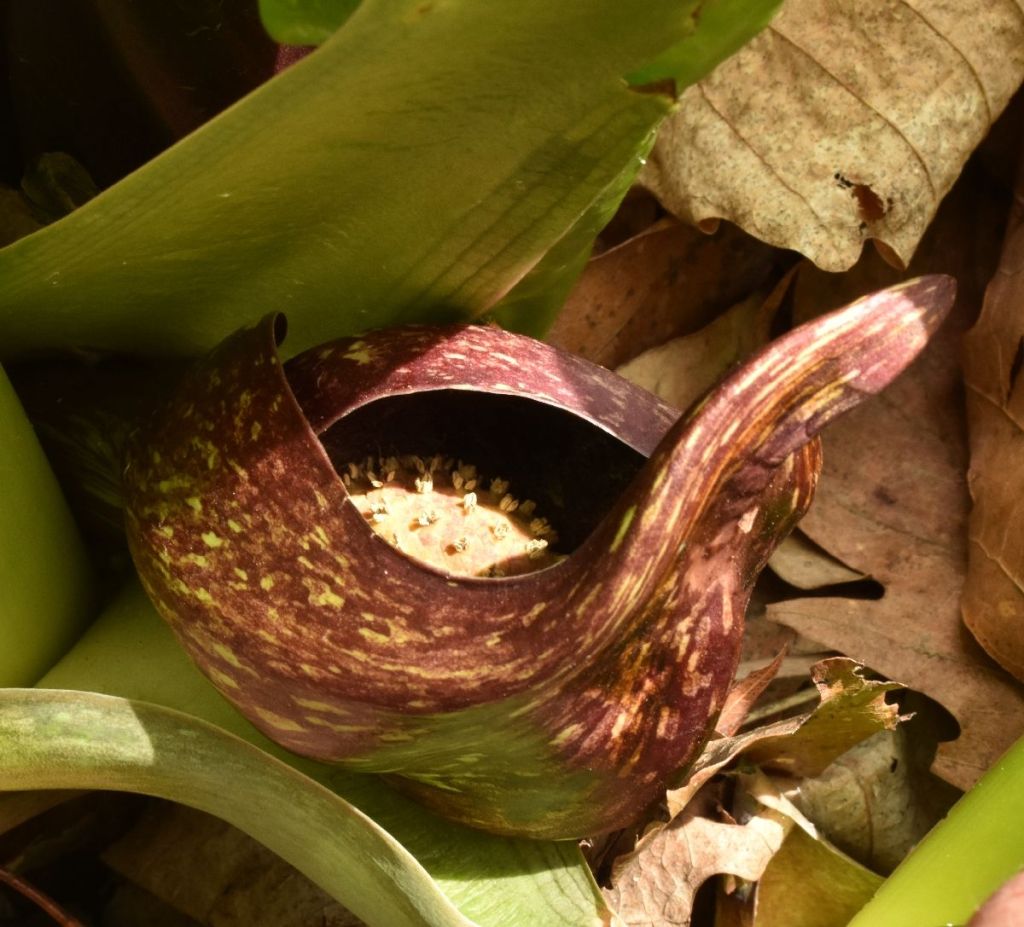
At the edge of the tidal marsh, this year’s new leaves of Sensitive Fern (Onoclea sensibilis) are emerging.
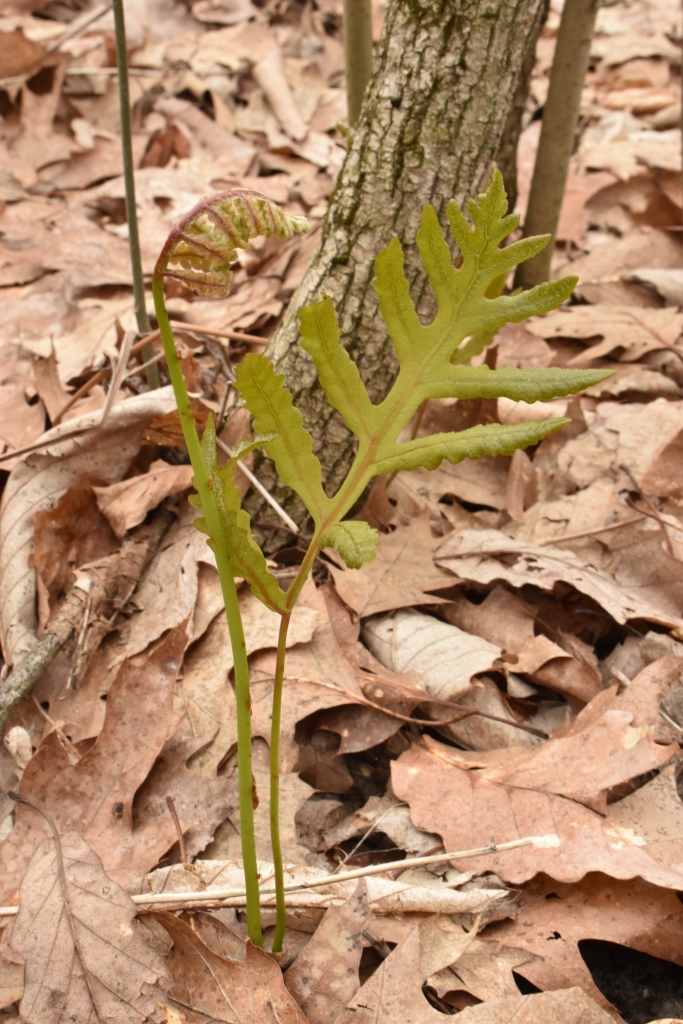
We found several clusters of these tiny seedlings. They are from Jewelweed (Impatiens sp.), which is also called Touch-me-not, because of its explosive seed dispersal, which usually results in widely-spaced seedlings. These seedlings are emerging from seeds that probably had been ingested by a deer that was browsing on the leaves, flowers, and fruits of Jewelweed late last summer, passed the seeds undamaged through its digestive system, and deposited them in a pile of dung.

The tidal mudflat south of Ferry Road at Nutten Hook. Because the Hudson River is tidal all the way up to the dam in Troy, its waters (which are not salty in our stretch of the river) rise and drop by several feet each day along the shores of Columbia County.

The rocky shore just north of Ferry Road at Nutten Hook.

Along the trail back on the east side of the ridge, Christmas Fern (Polystichum acrostichoides) fiddleheads (young leaves) were emerging from a cluster of last year’s leaves which had stayed green through the winter, but are now beginning to wilt.
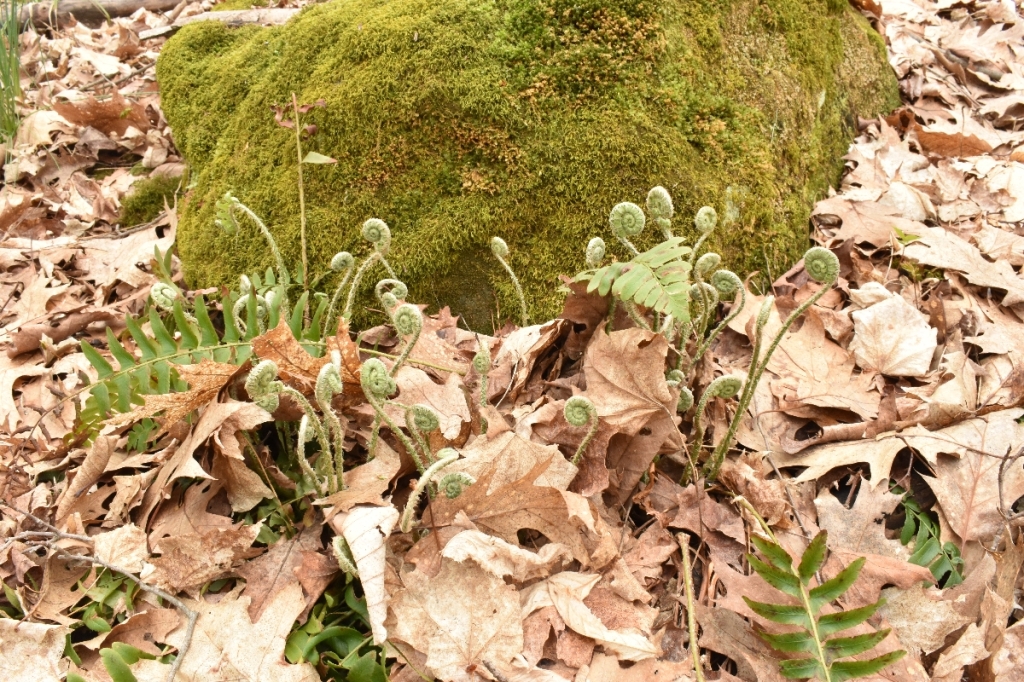
Before entering the young forest behind the former ice house, there is a nice patch of May-apple (Podophyllum peltatum) just emerging.

Young plants of May-apple (Podophyllum peltatum) have a single, umbrella-like leaf. Mature plants which will flower in a few weeks, have two leaves and a flower bud between them (such as the one with still folded leaves visible in the background in the image below).
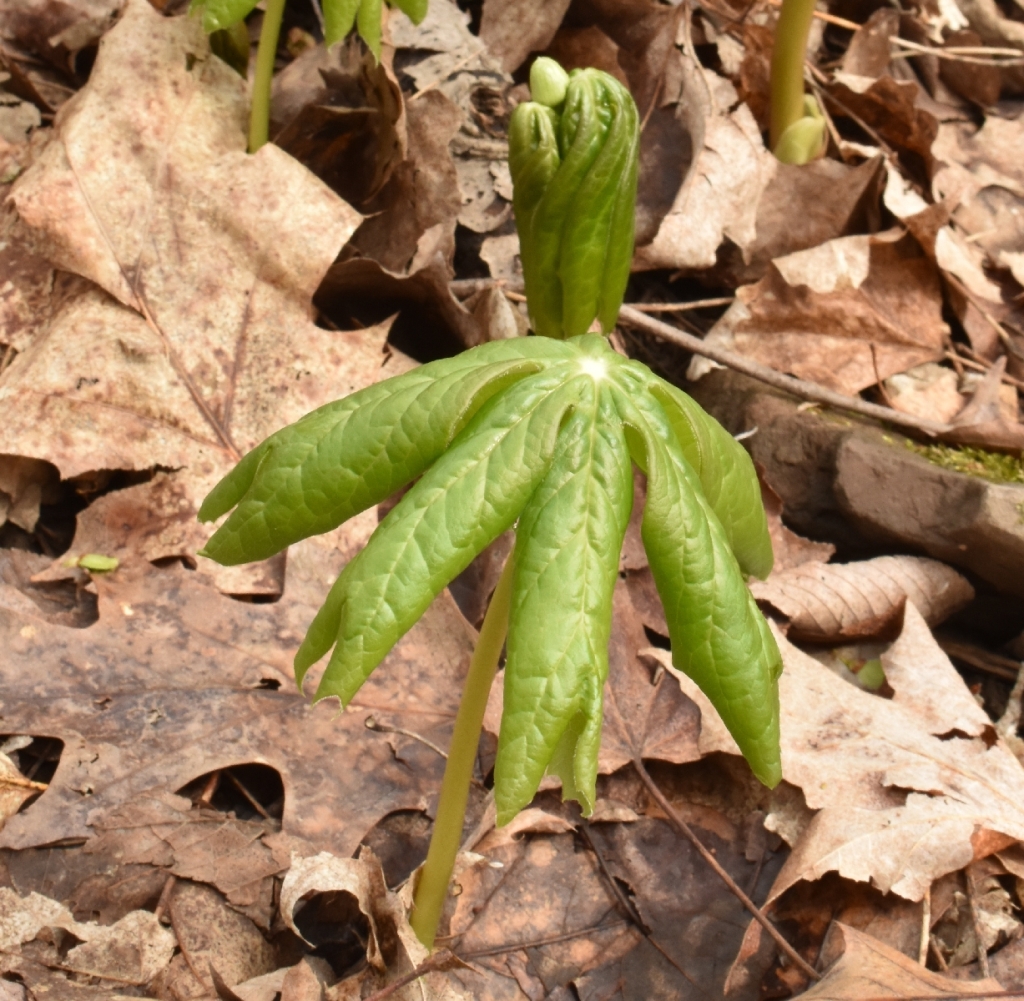
The remaining section of the trail leads through the Black Locust Forest that has sprung up in the formerly cleared area behind the ice house and sports a variety of invasive plant species. The stark contrast between this area and the forest along the earlier sections of the trail made us appreciate all the more the beautiful forest and the spring flora we had traversed earlier.

